
[106] Cyanistes caeruleus, Blue Tit
Introduction
Cyanistes caeruleus, the Blue Tit, is a small, common and widespread woodland and garden bird, no longer considered to be in the same genus as the Great Tit.
The species has been split fairly recently so this is the Eurasian Blue Tit to distinguish it from the African species.
Taxonomy
Kingdom – Animals
Phylum – Chordates
Class – Aves (Birds)
Order – Passeriformes (Perching Birds or Song Birds)
Family – Paridae
Genus – Cyanistes
Scientific Name – Cyanistes caeruleus
Until 2005 it was Parus caeruleus. When it was split to a new Genus, the African Blue Tit, formerly considered as a subspecies became a separate species. Cyanistes teneriffae.
Name
Tit is an old word of German origin for a small bird, originally as titling or titmouse. The Blue Tit is clearly related to [250] the Great Tit, although the two are no longer in the same genus.
Cyanistes is a made-up word based on the colour cyan. Caeruleus is Latin for a dark blue colour. (Parus is the Latin for the Tit.)
Description
Cyanistes caeruleus is one of our smallest birds. Both sexes are identical.
The top and back of its head is blue and a dark blue line circles the head through the eyes. The rest of the head is white. Underparts are yellow with a dark line down the centre of the abdomen. The back is partly dark blue and partly a dark yellow-green with white markings.
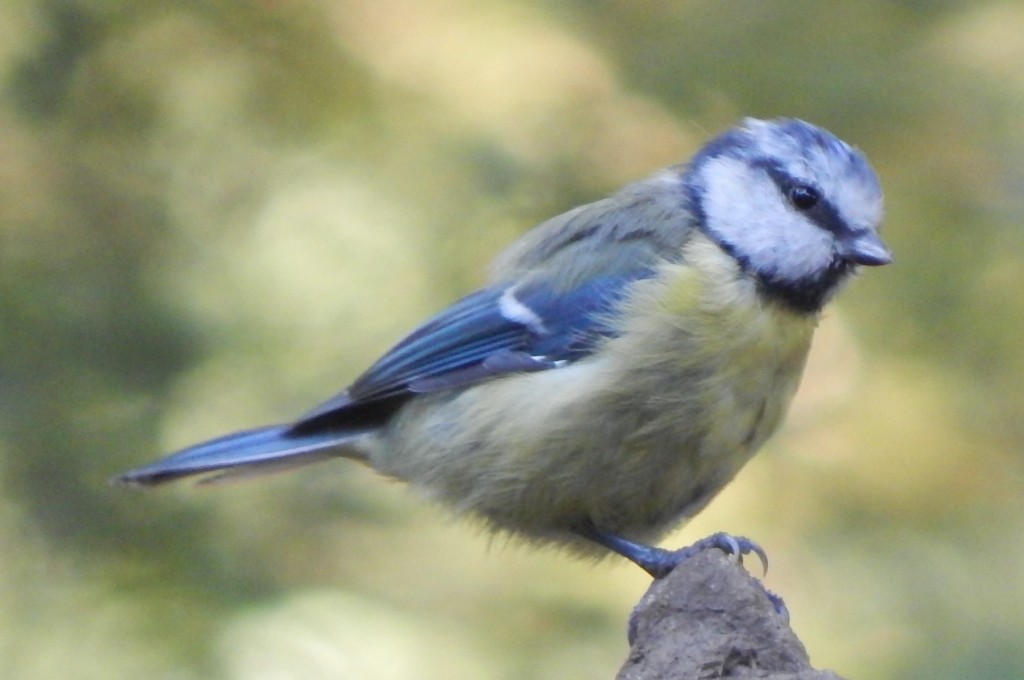

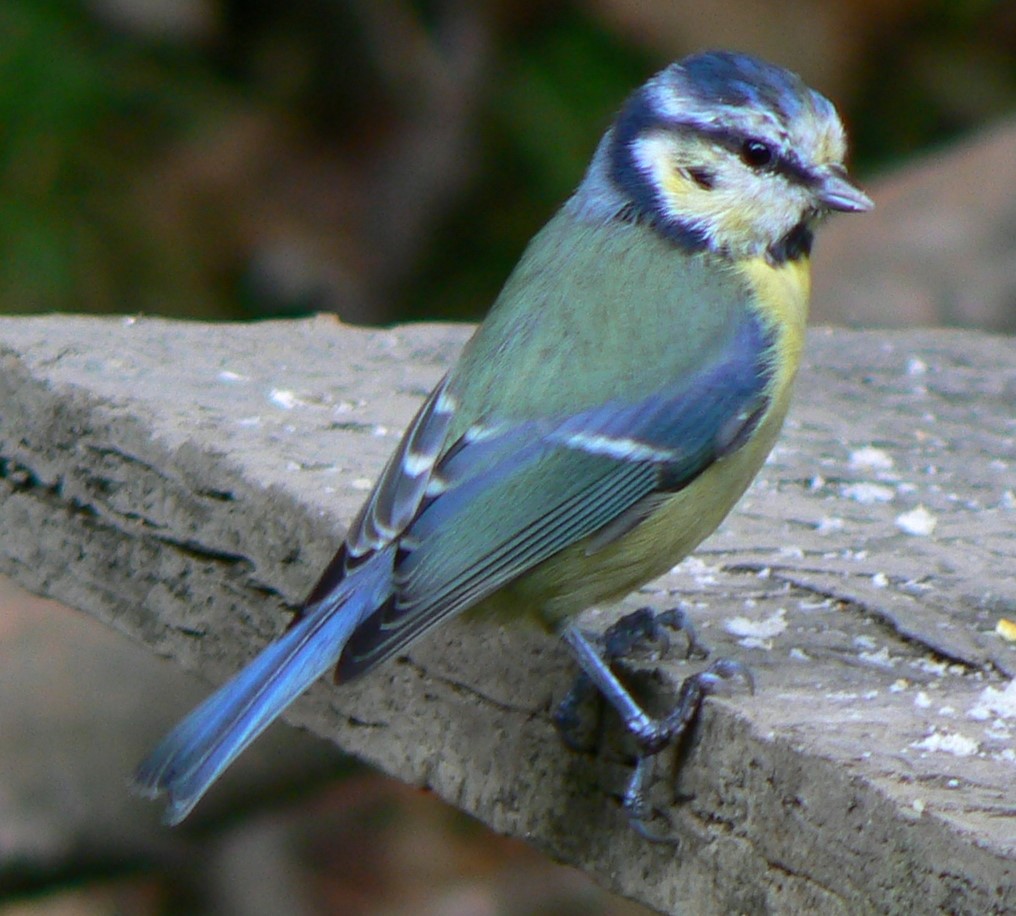
They feed mostly on insects but also eat seeds.
Their biggest natural predators are [001] Sparrowhawks and [144] Domestic Cats.
Habitat
The Blue Tit is very common and widespread over almost all of Europe. In Britain it is found in deciduous woodlands, parks and gardens, even in town centres. They are frequent visitors to bird feeders where they can be quite acrobatic.
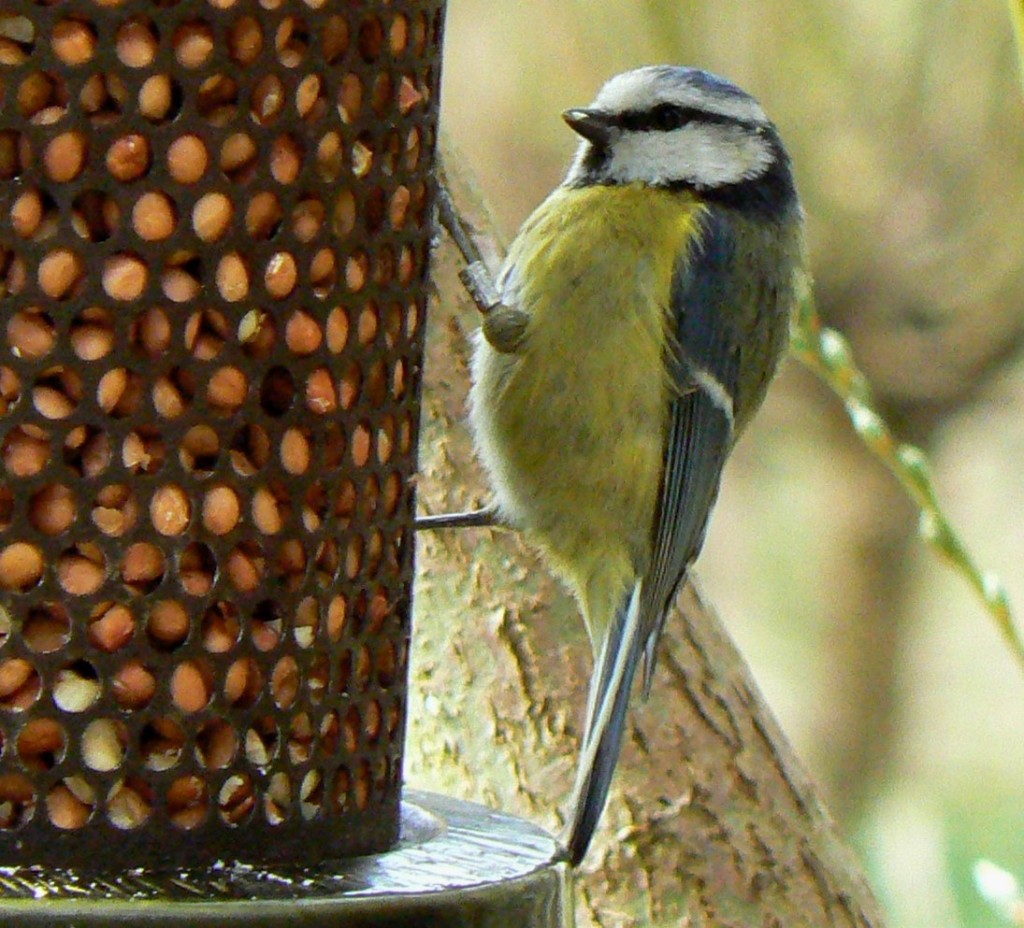
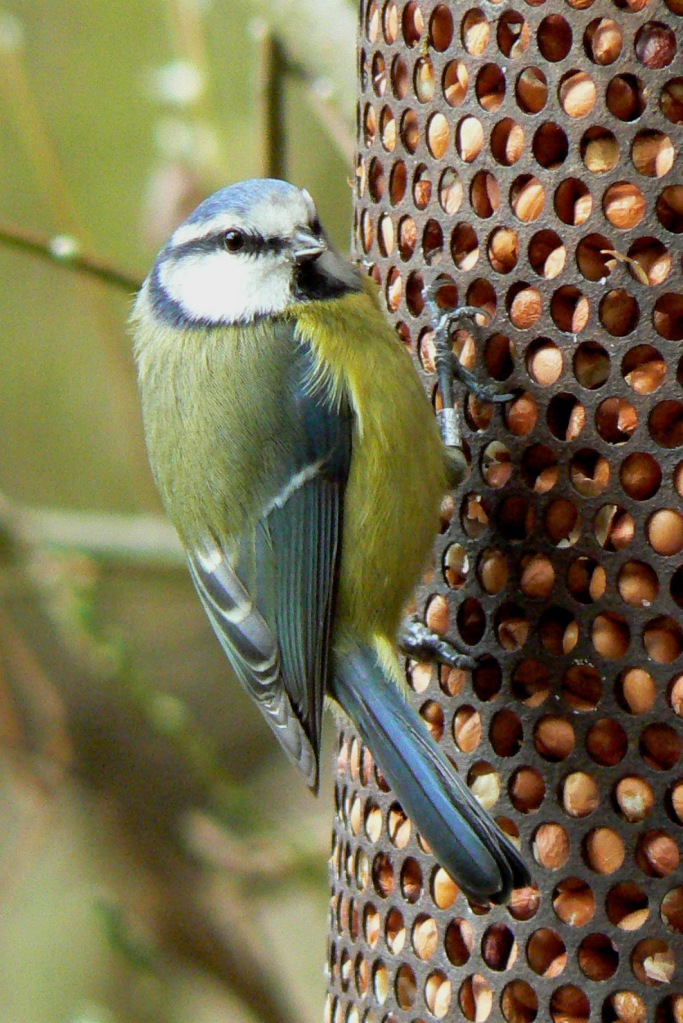

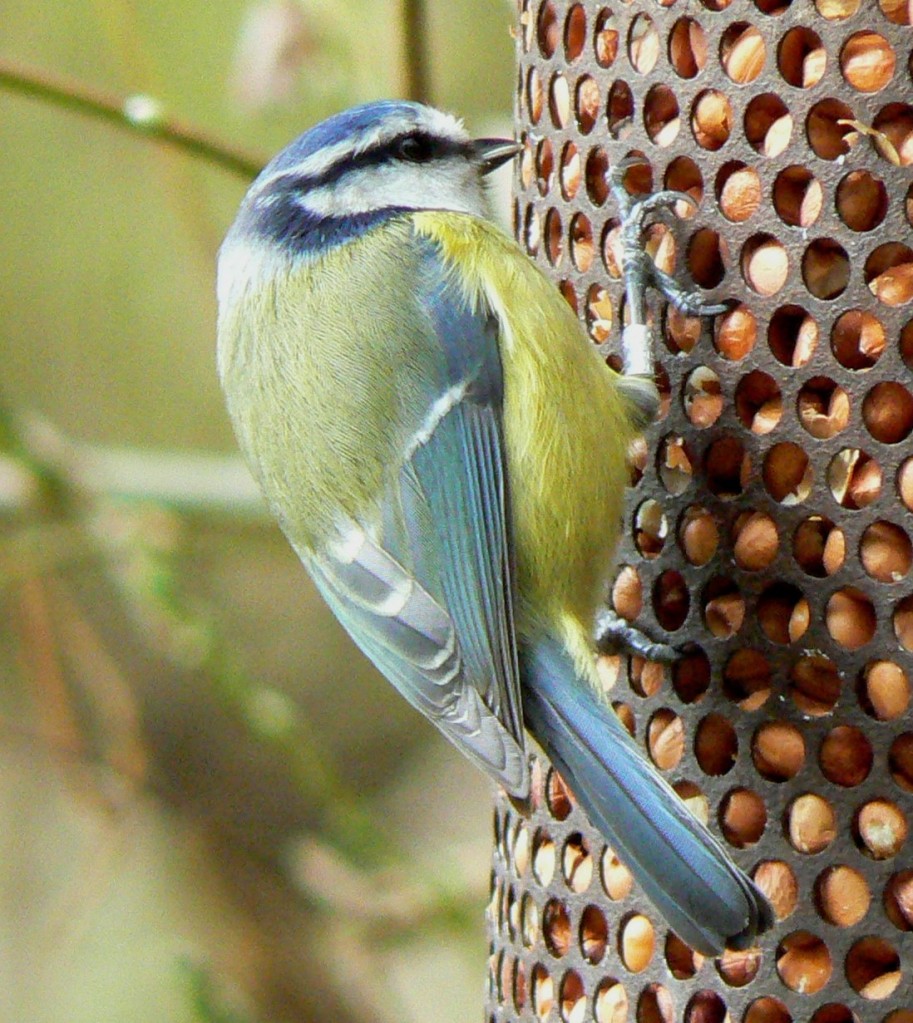
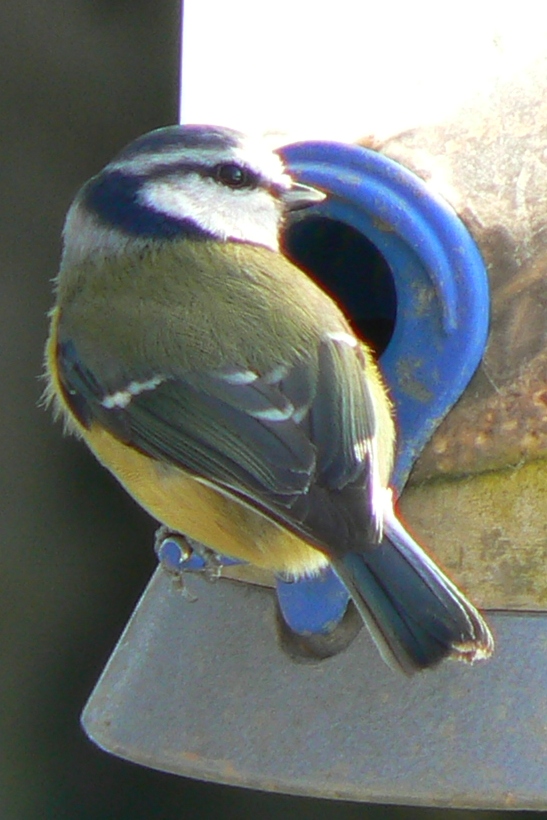

Other Notes
In woodland environments, Blue Tits will almost always be among the visitors to bird tables and bird feeders. They are not deterred by the presence of other larger birds.
See also
The Great Tit will also visit birdfeeders in woodlands and urban environments. There are others in the Tit family that will only be found in rural environments – Coal Tit, Marsh Tit and Willow Tit.
